Effective Maths Interventions: What We Can All Learn From 10 Years Of One To One Tutoring Data
At Third Space Learning, we’re on a mission to help schools close the maths attainment gap. 2023 marks a whole decade of that mission! That’s right — it’s been 10 years since we delivered our first one to one maths session. 1.9 million sessions, 160,000 pupils, and 4,000 schools later, we’ve learned quite a bit about effective maths teaching.
To mark this anniversary, we’ve dug into 10 years of tutoring data and put it together in this blog to share with you, teachers and school leaders nationwide who want to see their pupils succeed in maths. Read on for a quick, digestible summary of all that we’ve learned along the way, and how to use our insights to benefit your pupils.
- Diagnostic assessment leads the way
- Enjoyment relates directly to attainment
- The 4 most challenging topics for KS2
- Schools put forward Year 6 and Year 11 to take part in maths interventions
- Year 6 might be your most confident year group
- Secondary students need more encouragement to attend interventions
- Afternoons are most popular for tutoring
- Interventions are best when led by subject specialists
- Lesson structure is critical for success
- It is possible to deliver personalised one to one tutoring at scale
- What’s next?
Diagnostic assessment leads the way
There’s no shortage of discussion on the importance of diagnostic assessment in maths for catching misconceptions early and adapting your lesson plans accordingly. And it seems like the consensus is widespread: our data shows that the vast majority (95.7%, to be exact) of teachers enrolling their pupils in Third Space Learning one to one maths tutoring selected the diagnostic assessment programme.
This programme customises each pupil’s individual maths learning journey based on the learning gaps identified in the diagnostic assessment quiz, plugging any gaps at a pace that suits them. It also saves teachers valuable time, since they don’t have to select their students’ topics each week.
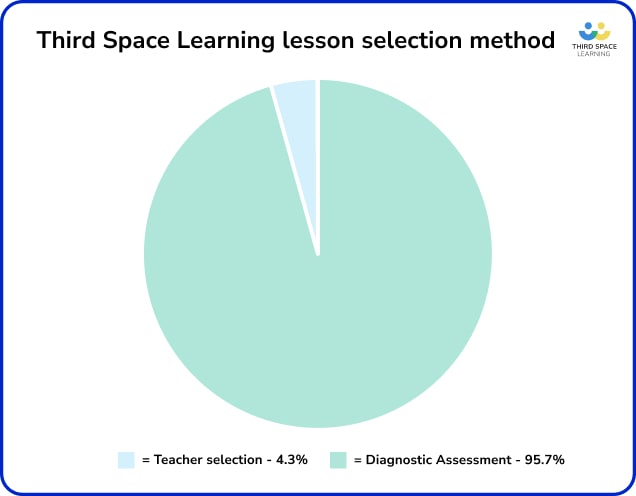
How can you incorporate diagnostic assessment into your maths teaching?
Assessing prior knowledge can save you time by only teaching the topics required. Use the following strategies to incorporate diagnostic assessment in the classroom:
Multiple choice quizzes
Multiple-choice questions are usually the most effective form of diagnostic assessment. Each incorrect answer (‘distractor’) reveals a specific maths misconception and the question can be designed so that students can only answer it correctly if they do not hold a misconception related to that topic. The discrete list of answers makes it quick for the teacher to mark and students can receive instant feedback about their understanding.
For a quick and easy diagnostic assessment, take a look at our free Back To School maths quizzes for Years 3-6.
Open-ended questions
Open questions can be used to spark a group discussion. They require longer answers than those that only need a simple, short response (closed questions). They are used to assess student understanding, identify learning gaps, and encourage deep thinking.
Examples include:
- Can you prove it?
- What do you notice?
- Is there another way?
- How do you know?
For further reading on effective questioning techniques, have a look at: Effective Questioning In The Classroom: 9 Tried and Tested Techniques For Teachers.
How we’ve taken diagnostic assessment one step further
Over the past 10 years, we’ve taken a data-driven approach to our initial assessment for pupils on our tutoring programme. The three carefully selected ‘distractors’ for each question help us understand exactly why a pupil struggles with a particular topic, and automatically informs the sequence of lessons they go through next. It’s personalised maths learning, backed up by diagnostic data!

Enjoyment relates directly to attainment
Everyone gets excited about perfect test scores, but it’s important to remember that pupil enjoyment and engagement is a key part of the journey to exam success. If the student is enjoying the session, they’re more likely to do well! And you don’t need to take our word for it, the data speaks for itself…
We’ve gathered together the lesson topics that pupils said they enjoyed most and found that they’re also the topics with the highest rate of academic success. Here they are, split out by year group:
- Year 3: Measuring in metres
- Year 4: Identifying triangles
- Year 5: Converting decimals to percentages
- Year 6: Addition and subtraction
- Year 10: Calculating with fractions

Meet Skye, the voice-based AI tutor making maths success possible for every student.
Built by teachers and maths experts, Skye uses the same pedagogy, curriculum and lesson structure as our traditional tutoring.
But, with more flexibility and a lower cost, schools can scale online maths tutoring to support every student who needs it.
Watch Skye in actionWhat does this mean for your teaching?
This data proves that enjoyment is key to academic success. While you’re ultimately aiming for your pupils to grasp and retain the concepts you’re teaching, it’s easier for them to do so if they’re enjoying themselves! Here are a few suggestions from our teaching community:
- Relate learning to the real world — for example, a project where students have to design a room in the school
- Take your class outside — stealth learning will encourage long term maths memory
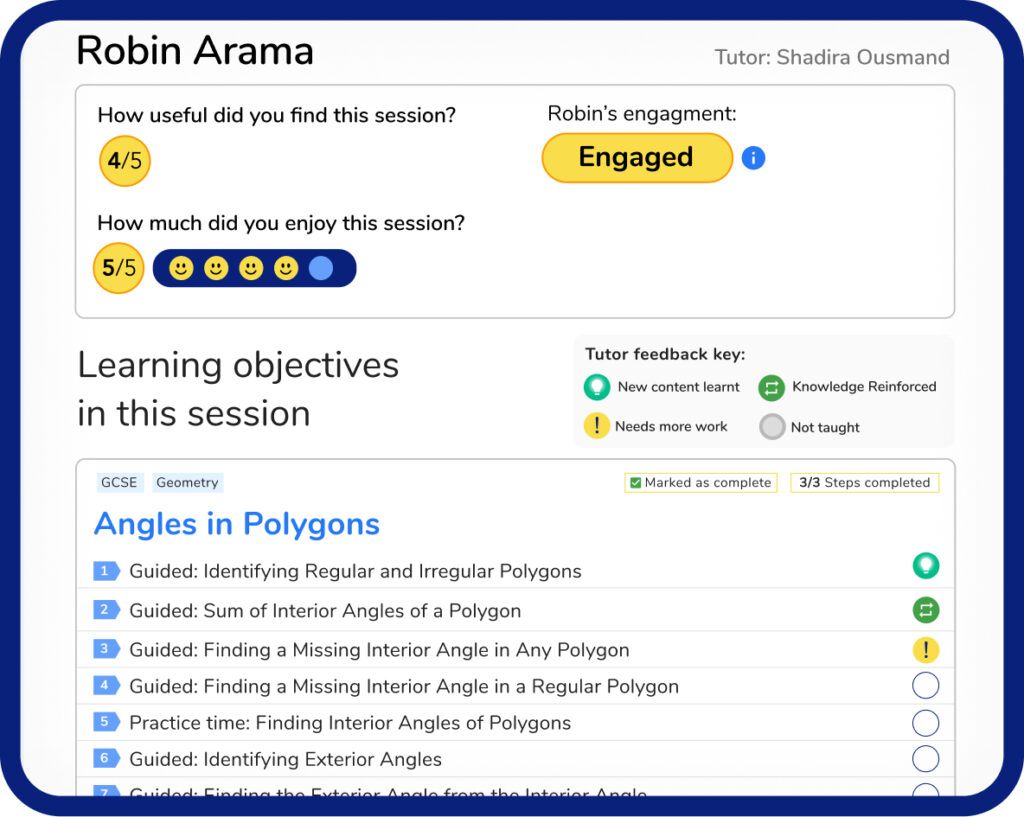
The 4 most challenging topics for KS2
We’ve covered the list of topics with the highest rate of success, but what about the ones that pupils find hardest? Here are the lessons that each year group found most challenging in their tutoring sessions:
- Year 3: Subtracting using the column method with exchanging
- Year 4: Solving balancing sums
- Year 5: Using the same difference method for whole numbers and decimals
- Year 6: Finding and estimating the position of decimals on a number line
How can you approach these trickier topics in the classroom?
- Use the ‘student voice’ to inform your approach of a tricky topics intervention
- Break the topic down into smaller, digestible chunks
- If you’re able, allow more time
For further reading on teaching strategies, take a look at: How To Learn Maths: 9 Strategies For Introducing New Concepts To Students
Using the data to improve pupils’ experience
We’re fortunate to have 1.9 million sessions’ worth of data to work with when we’re looking to identify any areas for improvement in the way lessons are set up. Each month, we use metrics such as feedback from tutor and pupil, and which questions are most often answered incorrectly to analyse the lessons delivered.
With this wealth of qualitative data at our fingertips, we can look into whether the incorrect answers are stemming from a wider issue and from there make adjustments to our curriculum design or tutor training depending on the answer. For example, if the data suggests that Year 4 pupils are spending longer on solving balancing sums than expected, we might modify the tutor notes to simplify their verbal explanation of this topic and make it easier for pupils to grasp. If the problem persists, we might redesign the lesson slides for this topic, breaking the teaching down into more digestible chunks for visual clarity. We are continuously monitoring the data to ensure that each pupil has the best experience possible!
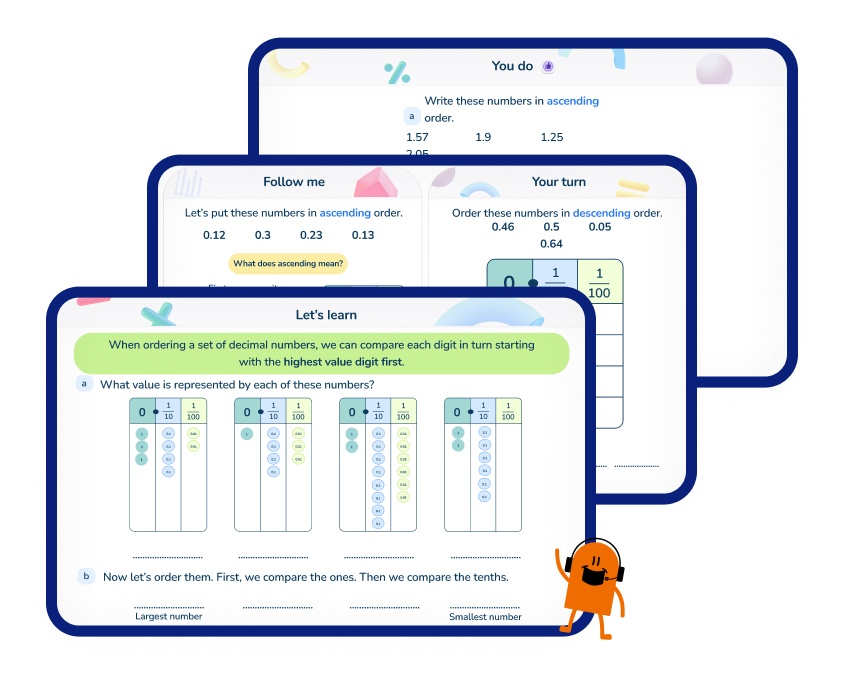
Schools put forward Year 6 and Year 11 to take part in maths interventions
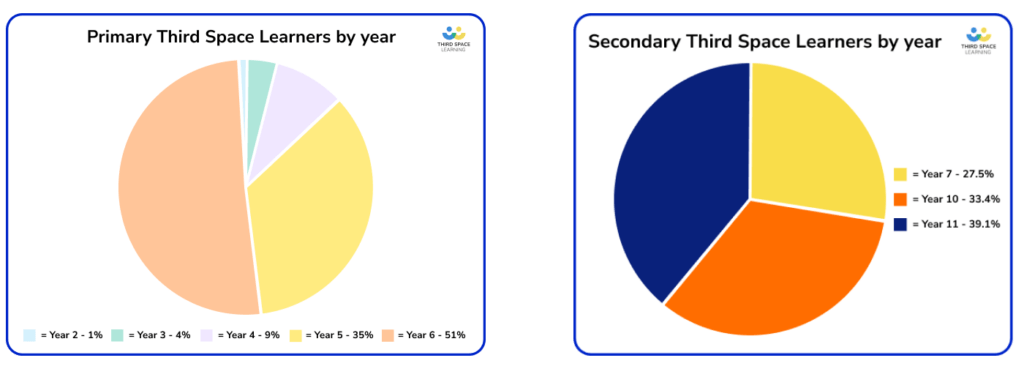
Of all the Third Space Learners put forward by their schools for maths tutoring over the past decade, the majority are in Year 6 and Year 11.
Year after year, schools choose our SATs revision programme and GCSE revision programme to support their target pupils with personalised one to one tutoring to give them confidence ahead of their exams.
We asked schools on what basis they select their pupils, and these were some of their responses:
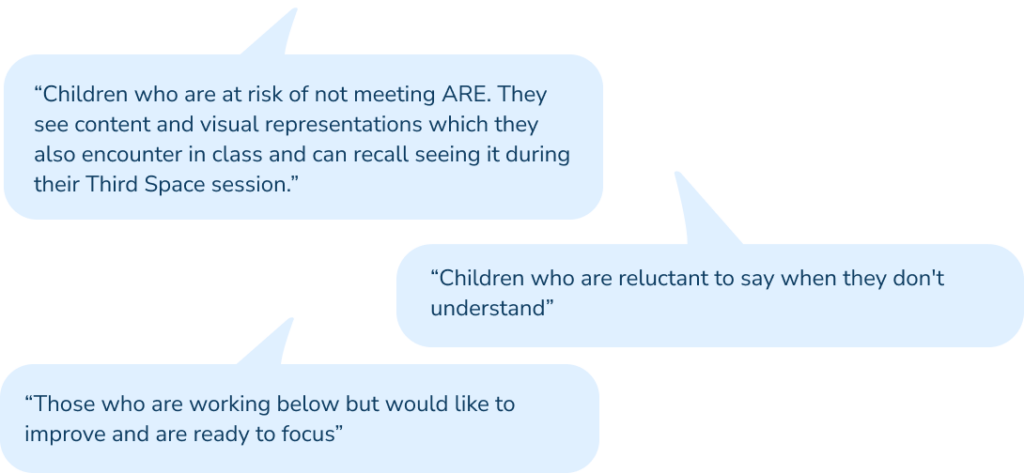
Year 6 might be your most confident year group
Each Third Space Learner is asked to self-rank their confidence and positivity towards maths at the beginning of their learning journey. This is part of the diagnostic approach and provides context for their tutors ahead of their sessions, as well as allowing their teachers to chart their changing mindset throughout the programme.
Year after year, Year 6 is the year group that scores themselves highest on confidence metrics — and that’s before they’ve even begun their tutoring sessions!
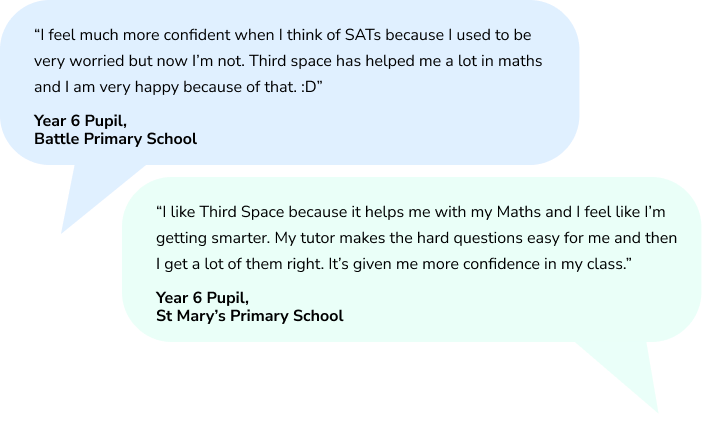
What does this mean for your teaching?
This is an important piece of data to bear in mind during that all-important SATs year! Though it’s an undoubtedly challenging time for both pupils and teachers, it’s great to see pupil confidence so high. A positive maths mindset gives pupils a sense of control over their mathematics learning, leading to greater self-efficacy, believing that they would improve their learning by making more effort. In turn, this contributes to better assessment results.
Why we measure pupil confidence
Studies into the domains of learning have shown that the state of the affective domain — a pupil’s emotions and feelings — make a huge difference to the efficiency of the cognitive domain — their ability to acquire and retain knowledge. Put simply, if a pupil is feeling anxious or under-confident during a session, they are less likely to grasp the concepts being taught.
Third Space Learning tutors can see how each pupil ranks their confidence and attitude towards maths ahead of their session, meaning that the tutor can adjust the pace and content of the session to suit the pupil, increasing their likelihood of understanding.
The Ultimate Guide to Maths Tutoring
How to choose, plan and fund the right tutoring approach for your students for maximum impact in your school
Download Free Now!
Secondary students need more encouragement to attend interventions
It’s no secret that frequent maths practice has been proven to help memory retention. That’s why Third Space Learning sessions take place weekly, giving pupils the maximum opportunity to apply their learning and keep their maths techniques ticking over. With tens of thousands of pupils completing one to one sessions each week, tracking the rate of attendance is a key metric for us — even though we know that it’s not always possible for every pupil to attend every single one!
Over the past 10 years, two year groups have led on sessions attendance: Years 3 and 5, tied for the top spot.
Strategies for improving on intervention attendance
Attendance is a particularly challenging issue for secondary schools, with estimates citing a 20% lower attendance rate to interventions compared with primary schools.
Over the past 10 years, we’ve dug into the behavioural insights research and tapped into the experience and expertise of the hundreds of schools we provide online one to one maths tuition to each week to find out how they’re improving attendance rates. A few of the strategies include:
- Empower students
- Discuss students’ learning goals and make a collaborative plan to reach them, whether it’s to pass an exam to enter the course they want to study at college, or to understand a specific topic in depth
- Parental buy-in
- Communicate the benefits of tutoring, make information about the location and timings of sessions readily available and share the expectations of students clearly. During the course of the intervention, celebrate children’s progress and communicate their achievements.
- Reminders to pupils
- Such as printing personalised timetables, using assemblies and form time to remind students or using technology to send alerts

Read more: 7 Strategies To Drive Attendance And Engagement In Secondary Tutoring
Third Space Learning reports include data on attendance for teachers to see, allowing them to track pupil progress across the term and make sure tutoring is reaching the students that need it the most.
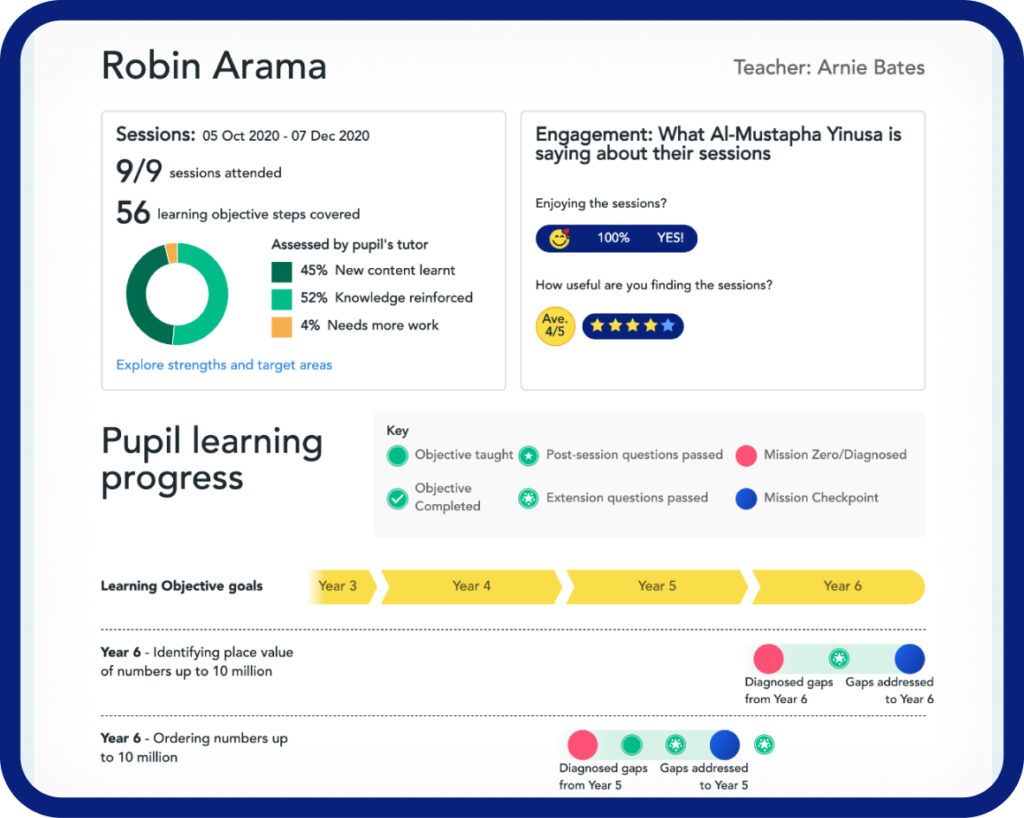
Afternoons are most popular for tutoring
Any maths intervention needs to fit the individual requirements and timetable of a school and its pupils. Over the past decade, we’ve been able to offer more and more flexibility to schools when they’re choosing their tutoring timeslots, meaning that more pupils than ever before can benefit from personalised one to one maths support.
However, it’s clear that there’s a trend: a massive 73% of Third Space Learning sessions have taken place in the afternoons, with the majority on a Tuesday.
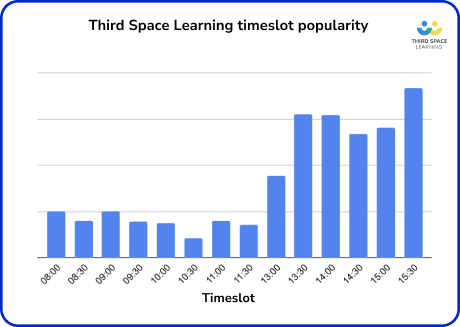
What does this mean for your pupils?
What works for one school may not work for another, but studies have demonstrated that the cognitive function of older students in secondary school peaks in the afternoon rather than the morning — which means this can be an ideal time to spend on maths interventions.
For primary school students, the popularity of afternoon timeslots is likely down to the fact that maths interventions like one to one tutoring are supplementary to class teaching — so it makes sense for them to take place in the afternoon, after core teaching in the morning.
Interventions are best when led by subject specialists
We couldn’t do the work that we do without our wonderful tutors, so we devote a lot of time to their training and professional development.
Each of the 4,000 tutors we’ve trained since 2013 is a STEM specialist who has passed through a rigorous application process and our intensive Global Tutoring Programme; a multi-stage process that results in only the most passionate and self-motivated applicants being accepted to deliver effective and engaging lessons. But we don’t stop there — each tutor receives regular session evaluations and other feedback from Academic Coaches to make sure they can continuously improve.
Tutors receive training in:
- Delivering student-centred teaching
- Building rapport and personalising lessons to age and ability
- Using effective Assessment for Learning techniques
- UK curriculum and safeguarding
In our experience, when the tutor is invested in their own growth and development, they deliver even better lessons. And that relationship between tutor and student is the secret to the maths success of Third Space Learners; everything else we do supports that rapport and the results are clear to see!
In an independent trial with Rising Stars, pupils receiving one to one maths support from Third Space Learning tutors made 7 months’ progress in 14 weeks.
Lesson structure is critical for success
With a grand total of over 500 lessons created by our expert team of former primary and secondary maths teachers over the past 10 years, Third Space Learners receive a personalised learning programme — whatever the outcome of their initial diagnostic assessment.
Aligned with the National Curriculum, all one to one lessons follow an ‘I do, you do, we do’ approach to help students move from guided to independent practice, building their confidence and accelerating progress.
The pedagogy behind our curriculum
Over the past decade, we’ve seen that the best way to ensure a pupil has understood a topic is to break it down into a series of small steps. In creating mastery units of smaller concepts, we’re able to make sure that each pupil grasps the topic before moving on.
Our intervention structure is based on this idea. Our Head of Academic Standards and former maths teacher Candida Crawford explains how: ‘the act of atomisation pulls apart and helps teachers understand what the components of teaching a concept are, helping them deliver the lesson better.’
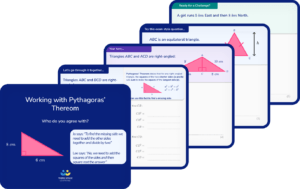
It is possible to deliver personalised one to one tutoring at scale
We recently asked a few of our longest-standing schools why they return to Third Space Learning’s maths tutoring programmes each year, and this is what they had to say…
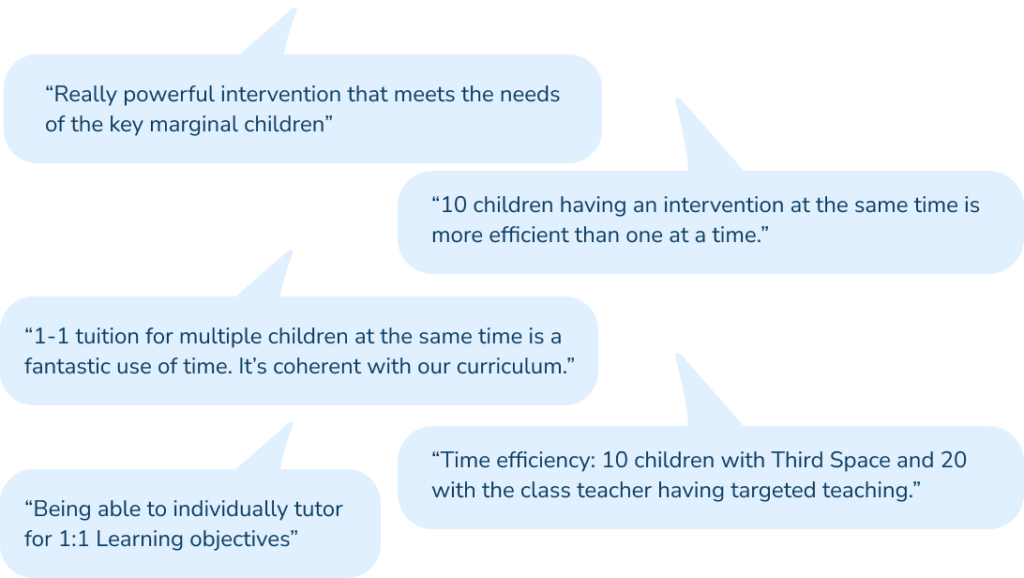
What’s next?
AI is a talking point across all industries at the moment, but particularly in education. We’re looking at a variety of ways that we can make our tutoring even more effective through AI going forward. Watch this space!
DO YOU HAVE STUDENTS WHO NEED MORE SUPPORT IN MATHS?
Skye – our AI maths tutor built by teachers – gives students personalised one-to-one lessons that address learning gaps and build confidence.
Since 2013 we’ve taught over 2 million hours of maths lessons to more than 170,000 students to help them become fluent, able mathematicians.
Explore our AI maths tutoring or find out about online maths tuition for your school.
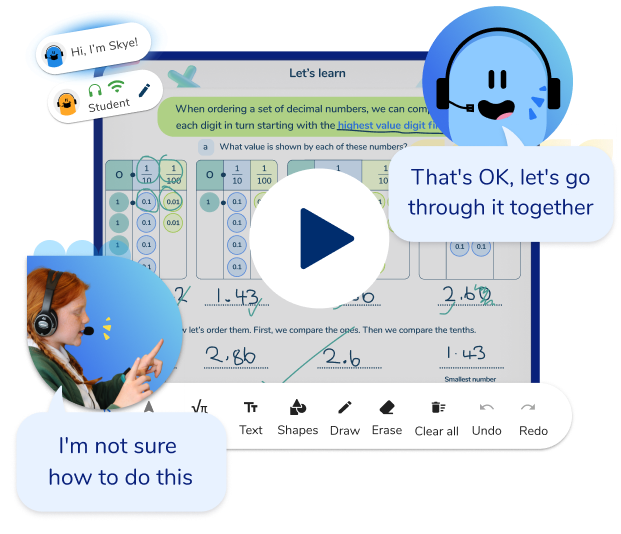
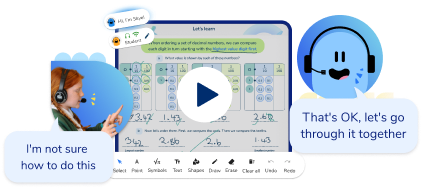

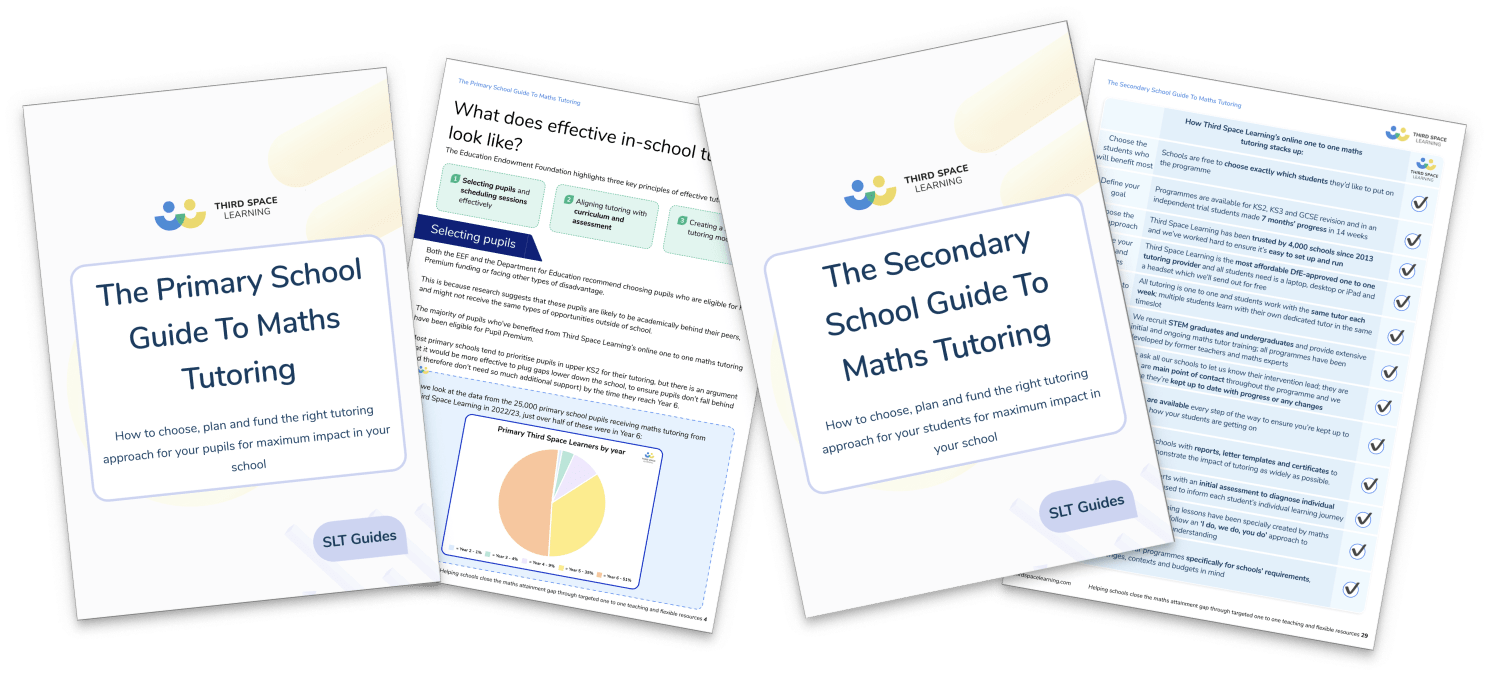
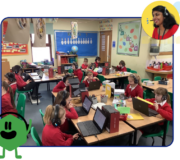


![Effective Praise In The Classroom: What Works & What Doesn’t [FREE Praise Certificate]](https://thirdspacelearning.com/wp-content/uploads/2022/06/OG-effort-points-blog-image-180x160.jpg)